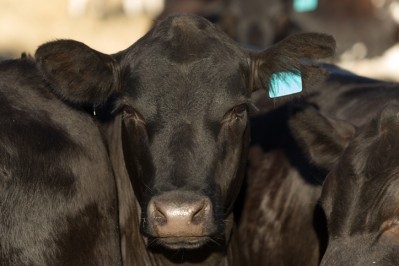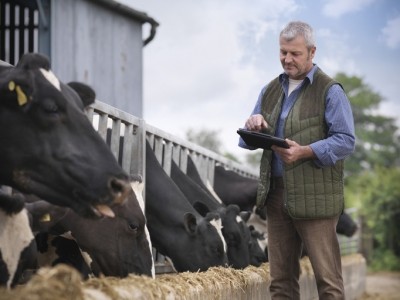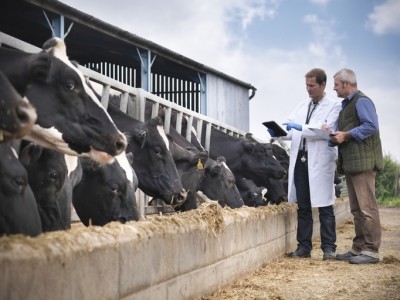US senators call on FDA to give livestock farmers the tools to cut methane emissions, but what nutritional approaches are effective?

In their letter, the senators note that the Food and Drug Administration (FDA) has not yet approved any feed additives to achieve this goal despite the potential for these products to provide farmers with additional tools to reduce a large share of their operations’ greenhouse gas emissions (GHG) footprint and create a level playing field with their European and Brazilian competitors.
“It’s crucial that our farmers here in Wisconsin and across the nation have the resources they need to achieve their climate goals,” said Baldwin.
“The FDA must work to review the role that animal feed additives play in lowering enteric emissions so that farmers have more resources at their disposal to achieve their proposed GHG reductions and compete on a global scale with producers who already have access to feed additives,” she added.
The American Feed Industry Association (AFIA), the National Grain and Feed Association (NGFA) and other US entities have long been urging the FDA to revamp its policies in this regard.
Methane emissions strategies
A recent meta-analysis, published in the Journal of Dairy Science, shows that widespread adoption of mitigation strategies with proven effectiveness by the livestock industries will depend on cost, government policies and incentives, and willingness of consumers to pay a higher price for animal products with decreased carbon footprint.
Intensive research in the past decade has resulted in a better understanding of factors driving enteric methane (CH4) emissions in ruminants, said the authors, who are based at Pennsylvania State University and the International Livestock Research Institute, in Nairobi, Kenya.
But what are the most efficient methane emissions mitigation strategies in ruminants?
That US and Africa-based review team outlined how meta-analyses of large databases, developed through the GLOBAL NETWORK project, have identified successful strategies for mitigation of CH4 emissions, with methane inhibitors, alternative electron sinks, vegetable oils, oilseeds, and tanniferous forages among the recommended strategies for mitigating CH4 emissions from dairy and beef cattle and small ruminants. “These strategies were also effective in decreasing CH4 emissions yield and intensity.”
Production and health concerns
However, there can be drawbacks from these approaches:
A higher inclusion rate of oils may negatively affect feed intake, rumen function, and animal performance, specifically milk components in dairy cows, noted the reviewers.
Nitrates
In the case of nitrates (electron sinks), concerns with animal health may be impeding their adoption in practice, and potential emission trade-offs have to be considered, they stressed.
Tannins
Tannins and tanniferous forages may have a negative effect on nutrient digestibility, and more research is needed to confirm their effects on overall animal performance in long-term experiments with high-producing animals, claimed the scientists.
3-NOP

The authors also discussed the findings of a meta-analysis of studies with dairy cows fed the CH4 inhibitor, 3-nitrooxypropanol (3-NOP), carried out by the Pennsylvania State University, which they said showed a consistent 28 to 32% decrease in daily CH4 emissions or emissions yield and intensity; no effect on dry matter intake (DMI), milk production, body weight, or body weight change, and a slight increase in milk fat concentration and yield. The additive also appears to increase milk urea nitrogen concentration.
They said there would seem to be an exponential decrease in the mitigation effect of the inhibitor with increasing its dose (from 40 to 200 mg/kg of feed dry matter, corresponding to 3-NOP intake of 1 to 4.8 g/cow per day); and a potential decrease in the efficacy of 3-NOP over time, which needs to be further investigated in long-term, full-lactation or multiple-lactation studies.
Seaweed
The red macroalga Asparagopsis taxiformis has a strong CH4 mitigation effect, but studies are needed to determine its feasibility, long-term efficacy, and effects on animal production and health, they continued.
“Asparagopsis spp. do cause a dramatic decrease in CH4 emissions in vivo, but DMI may also decrease (Stefenoni et al., 2021), and there are concerns with the environmental impact of bromoform (ozone layer depletion) and effects on animal health and milk quality (Hegarty et al., 2021; Muizelaar et al., 2021; Stefenoni et al., 2021) ….
“Research in this novel and exciting field will certainly continue in the near future, but its long-term impact on livestock GHG emissions is difficult to predict.”
Forages
Increasing forage digestibility and digestible forage intake has the potential for decreasing enteric CH4 emission intensity and was one of the recommended mitigation practices in the analysis by Hristov et al. (2013b), according to this overview.
Although responses vary, enteric CH4 emissions can be reduced when corn silage replaces grass silage in the diet (Hassanat et al., 2013; Benchaar et al., 2015; Ramin et al., 2021). Feeding legume silages could also lower CH4 emissions compared with grass silage due to their lower fiber concentration (Waghorn et al., 2002; Archimède et al., 2011), noted the scientists.
With some species, specifically red clover, slight increases in CH4 yield have been reported (Gidlund et al., 2017). Maturity at harvest is an important factor determining CH4 emissions from ruminants fed predominantly forage diets (Eugène et al., 2021), said the team.
Concentrated feeds
Another mitigation practice that has been consistently found to decrease daily CH4 emissions is increasing the inclusion of concentrate feeds in the diet, replacing forages.
“Implementation of this practice, however, can be limited by feed availability, cost, and the risk of rumen function disturbances.
“Further, market improvements in the emitted CH4 energy as a percent of gross energy intake can be expected beyond 35 to 40% concentrate inclusion in the diet, but the effect also depends on the overall level of feed intake.”
Essential oils
Botanicals and specifically essential oils (EO) have also been extensively studied as CH4 mitigants (Calsamiglia et al., 2007). The effect of this category of compounds on CH4 emission in controlled studies, however, has been inconsistent, and the strategy was not recommended in the analysis by Hristov et al. (2013b), found the review.
“Many studies have reported mitigation effects of botanicals or EO in vitro, but it is widely accepted that in vitro systems, although well suited for screening of large number of treatments, are not very representative of live animal responses, and it is strongly recommended that in vitro data are confirmed in in vivo experiments (Flachowsky and Lebzien, 2012; Hristov et al., 2012; Yáñez-Ruiz et al., 2016).
“Overall, variability in animal responses to EO-based additives has been extremely high (Hegarty et al., 2021); the compounds generally have a broad spectrum of activities, in some cases negatively affecting the overall rumen fermentation, and it has been suggested that the field may benefit from a more targeted compounds approach (Cobellis et al., 2016).
“Recent results for some commercial products have been moderately encouraging (Roque et al., 2019b; Belanche et al., 2020; Silvestre et al., 2021) and need to be confirmed.”
The costs: How to ensure technology adoption
One element that is often missing in enteric CH4 discussions is the cost of implementing mitigation strategies with proven effectiveness, said the reviewers.
“As an example, the current price of wild-harvest, freeze-dried Asparagopsis taxiformis from one source (seaExpert, Feteira, Ilha Do Faial, Portugal) was €167.2/kg (US$176.7/kg), excluding transportation. At a feeding rate of around 0.5% of dietary DM (Stefenoni et al., 2021), inclusion of this seaweed in a dairy cow diet will cost the producer around US$24/d, which is obviously unrealistic.
“It should be noted, however, that this price is expected to rapidly decrease if and when technologies for aquaculture production of Asparagopsis are developed and global supplies increase.”
It is thus safe to assume, they continued, that without revolutionary improvements in technology or government and market interventions (i.e., carbon credits/market or tax), efficacy of a mitigation strategy alone will not be enough to ensure its adoption by the livestock industries.
In addition, they believe several elements, on the global scale, need to be considered in the various mitigation scenarios, including emissions leakage - increasing livestock emissions in one region as a result of decreased animal production in another, rebound effects - increased demand for animal products as production efficiency increases and production costs decrease - emissions pricing, demand-side effects - including dietary changes - and others (Herrero et al., 2016).
“Therefore, efficacy, although critically important, is only one piece of the complex puzzle of adoption of mitigation strategies for livestock GHG emissions.”












